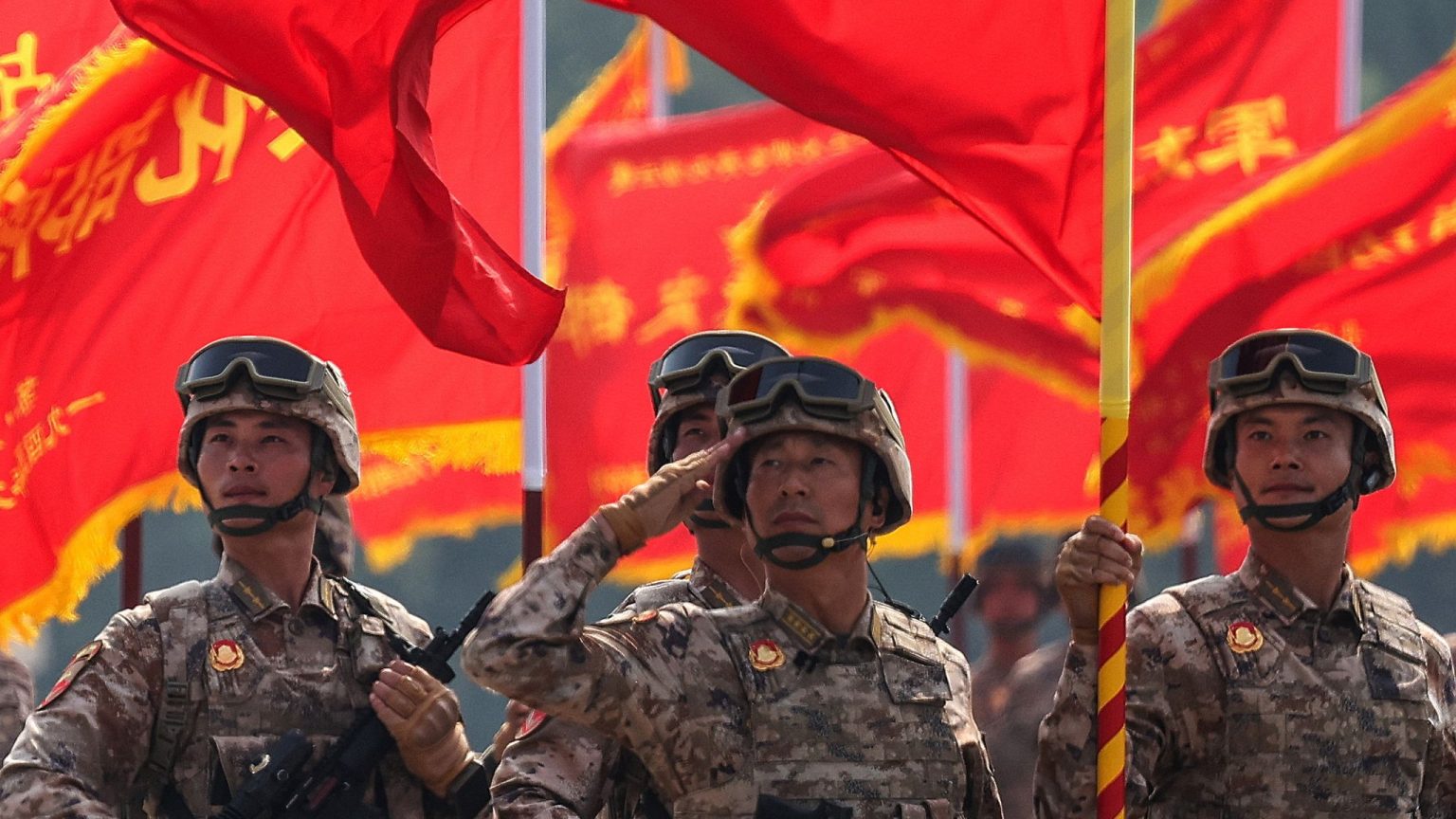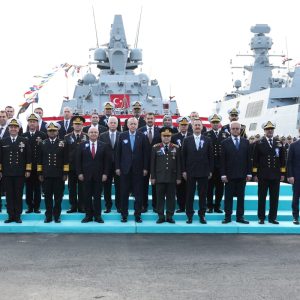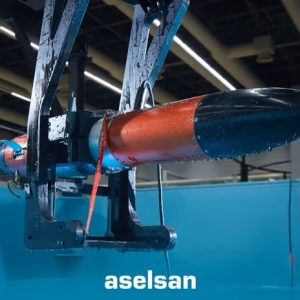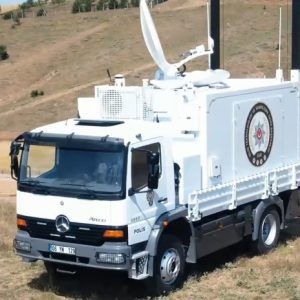China’s 80th‑anniversary spectacle in Beijing was more than a commemoration. It served as strategic messaging. The China nuclear triad parade placed intercontinental missiles, cyberspace units, and “robot wolves” on one stage. Beijing aimed to show legacy mass and new‑age systems moving in lockstep. For NATO and Indo‑Pacific planners, the signal was clear and deliberate.
Key Facts
- First combined public showing of air, sea and land nuclear forces: JL‑1 (air‑based, per state media), JL‑3 SLBM, DF‑61 ICBM, and a new DF‑31 ICBM.
- Cyberspace and information support forces marched with conventional units, stressing C4ISR and resilience.
- Unmanned systems included ship‑launched UAVs, AJX002 underwater drones, quadruped “robot wolves,” and a truck‑mounted air‑defence laser.
- Fly‑past featured J‑20 and J‑35A fifth‑generation fighters and the J‑16D electronic‑attack variant.
What Beijing Chose to Signal
Parades are theatre, yet this one served a purpose. By pairing strategic missiles with information‑age units, the China nuclear triad parade framed deterrence as an integrated project. The triad—JL‑1, JL‑3, DF‑61 and a new DF‑31—offers assured retaliation from air, sea and land. Around that core, cyber and information formations protect kill chains with hardened networks and disciplined data flows. Consequently, China presented integrated deterrence backed by scale.
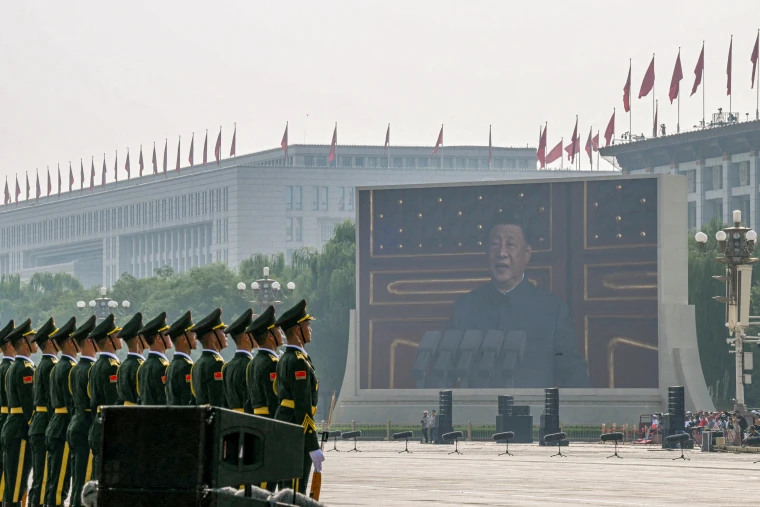
From A2/AD to Information‑Led Reach
China’s missile forces already anchor A2/AD in the Western Pacific. Hypersonic anti‑ship missiles such as YJ‑17, YJ‑19 and YJ‑20 extend pressure on carrier groups. However, the parade added context. The information support force, created in 2024, builds and sustains networked readiness. Therefore, the China nuclear triad parade suggested a shift from static denial to dynamic, data‑driven power projection where sensors, platforms and shooters fuse across domains.
Autonomy at Scale—and a Counter‑Drone Laser
Beijing highlighted unmanned depth. Shipborne rotary‑wing UAVs, underwater vehicles like AJX002, and quadruped “robot wolves” expand persistent ISR and stand‑off strike. In urban and littoral zones, these assets absorb risk and thicken the sensor mesh. Notably, a truck‑mounted laser underscored cost‑exchange logic. As drone numbers rise, directed energy promises low‑cost, deep magazines for point defence.
Airpower: Stealth, Jamming and Roles
The aerial segment stressed effects, not airframes. J‑20 and navalized J‑35A provided stealth. The J‑16D added stand‑off jamming. Together they open corridors, shelter strike packages and complicate adversary sensing. In the logic of the China nuclear triad parade, these aircraft act as nodes inside a system‑of‑systems that links ISR, electronic warfare and long‑range fires.
The Integration Question
Inventory on display does not equal combined‑arms mastery. China has not fought a large war since the late 1970s. Even so, the parade sketched the architecture of integration. Cyber formations protect command and control. Unmanned platforms fill ISR gaps. Triad forces provide a strategic backstop. As a result, Beijing tried to narrow uncertainty about competence without revealing readiness data.
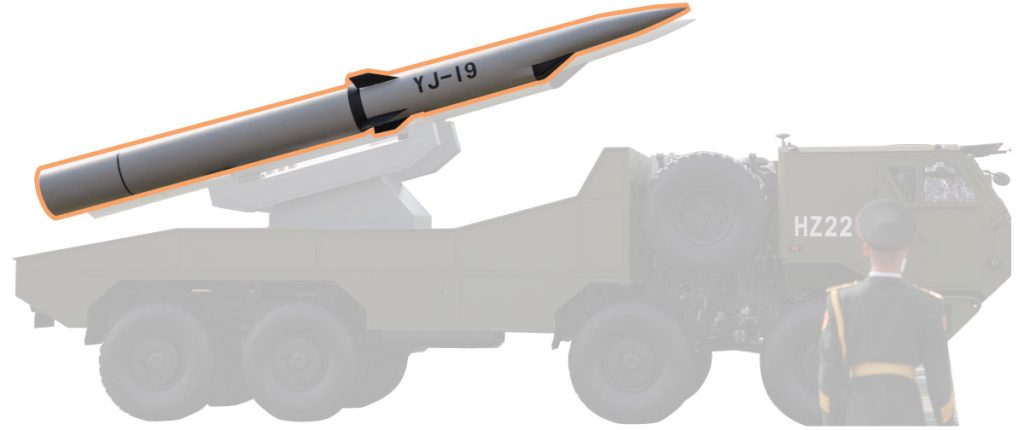
Implications for NATO and the Indo‑Pacific
Allies should read two signals. First, long‑range fires backed by a visible triad raise crisis thresholds and complicate escalation ladders. Second, cheap autonomy plus directed energy shifts the offence–defence balance at the edge. Accordingly, defence industries—from Türkiye’s ecosystem to European primes—should accelerate C4ISR resilience, counter‑UAS at scale and survivable logistics.
How to Read the ‘Robot Wolves’
Quadruped robots will not decide wars. They do extend the perimeter, carry sensors and act as attritable relays. Networked packs can flood the contact picture in cities or along coasts. Hence, responders need layered sensing, automated target recognition and rapid kill‑web orchestration. Allied R&D is already moving in that direction.
Context and Caution
State media used ambitious labels. For example, it described JL‑1 as an air‑based long‑range missile. Analysts should treat names carefully and track tests, deployments and performance, not rhetoric. Nevertheless, the composition and sequencing in the China nuclear triad parade map current priorities: survivable strategic forces, hardened information layers, autonomous mass and selective hypersonic reach.
Bottom Line
Beijing presented a comprehensive, multi‑domain force with strategic depth and tactical experimentation. The China nuclear triad parade matters less as a one‑day show and more as a step toward normalizing integrated deterrence in public view. Therefore, allied forces should harden networks, multiply autonomous defenders and keep credible strike options under persistent electronic pressure.
For related coverage of hypersonic systems and A2/AD trends, see our China archive here.
Original reporting by Sky News examining units and hardware on display can be found here.
Further Reading
- NATO – Deterrence and Defence
- SIPRI Yearbook – Armaments, Disarmament and International Security
- CSIS – China’s Missile Forces (Missile Defense Project)
References
- Defence Agenda – China coverage archive: /tag/china/
- Sky News – “Nuclear power, cyber troops and robot wolves…”: news.sky.com
- NATO – Deterrence and Defence: nato.int

